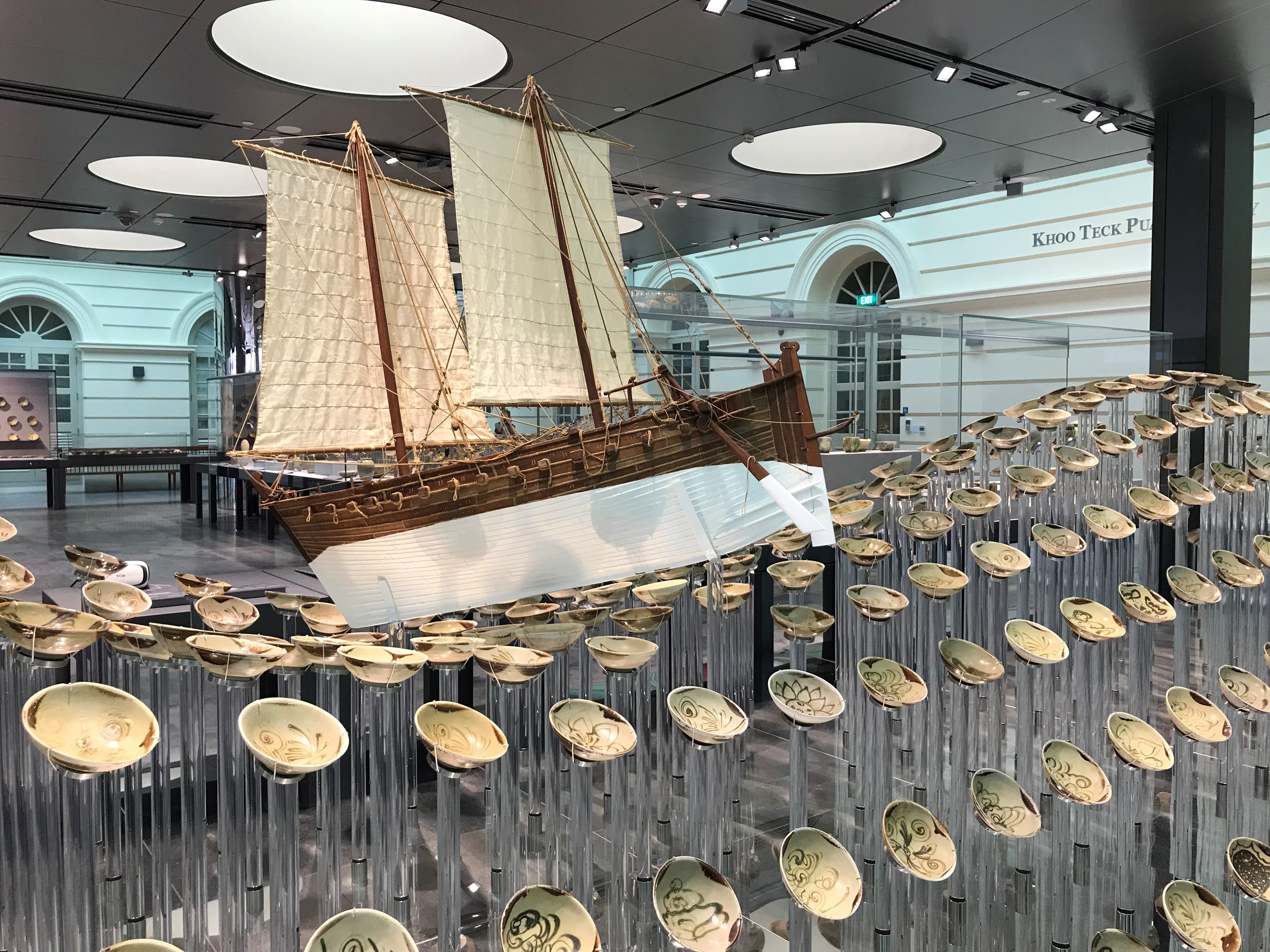About
'East' meets 'West'
By the 18th century trade between China and Europe had expanded from a quest for spices to embrace tea, textiles, silver, and porcelain. Porcelain was incidental to the success of this trade, constituting 6% or less of the value of East India Company cargoes. But the quantity of exported porcelainssome 300 million pieces are believed to have reached England over two centuries ensured a lasting influence on Western taste and ceramics history. An entirely new aesthetic -- part ‘Western’, part Asian -- emerged with private traders, who gave rein to their individual tastes by ordering, directly from China, specially designed porcelains painted with armorials, views, or timely images based on drawings and prints. However, early examples showed mistakes in copying ‘Western’ symbols -- a reflection of the unfamiliarity of the Chinese with the symbols and customs of their new trading partner.
As the export trade increased, so did the demand from Europe for familiar, utilitarian forms. European forms such as mugs, ewers, tazze, and candlesticks were unknown in China, so wooden models of the original were sent to the Chinese potteries to be copied. Porcelain decorated only in blue pigment painted under the glaze dominated the export trade until the very end of the 17th century. The popularity of polychrome enameled decoration painted over the glaze seems to be a result of the growing interest in porcelain decorated with coats of arms. The first armorial porcelain was painted in cobalt blue only, and this monochrome palette made it extremely difficult to depict a legible coat of arms. Polychrome enamels allowed for detailed, accurate coats of arms, and the trade in armorial porcelain became the defining aspect of Chinese export porcelain in the 18th century.
Blue and White

Tang Shipwreck exhibition at the Asian Civilisations Museum, Singapore
The colour blue gained special significance in the history of Chinese ceramics during the Tang dynasty (618-907). The distinctive colour of blue-glazed pottery and porcelain comes from cobalt ores imported from Persia, which were a scarce ingredient at the time and used in only limited quantities. The cobalt pigment is one of the very few that can withstand the highest firing temperatures that are required to fire the long-lasting porcelain. In the Yuan (1279-1368), Ming (1368-1644) and Qing (1644-1911) dynasties in particular, different types of cobalt ore and methods of application determined the distinctive feature of the shades of blue that appeared on blue and white porcelain ware.
The first Chinese blue and white wares were produced as early as the 1st century in Henan province, China during the Tang Dynasty, although only shards have been discovered. Tang Dynasty blue and white is more rare than Song Dynasty blue and white and was unknown before 1985. The Tang pieces are not porcelain however, but rather earthenwares with greenish white slip, using cobalt blue pigments. The only three pieces of complete "Tang blue and white" in the world were recovered from Indonesian Belitung shipwreck in 1998 and later sold to Singapore. It appears that the technique was forgotten for some centuries.
In the early 14th century, mass-production of fine, translucent, blue and white porcelain started in Jingdezhen, sometimes called the porcelain capital of China. This development was due to the combination of Chinese techniques and Islamic trade. A large portion of these blue and white wares were then shipped to Southwest-Asian markets through the Muslim traders based in Guangzhou. Production of blue and white wares has continued at Jingdezhen to this day.


